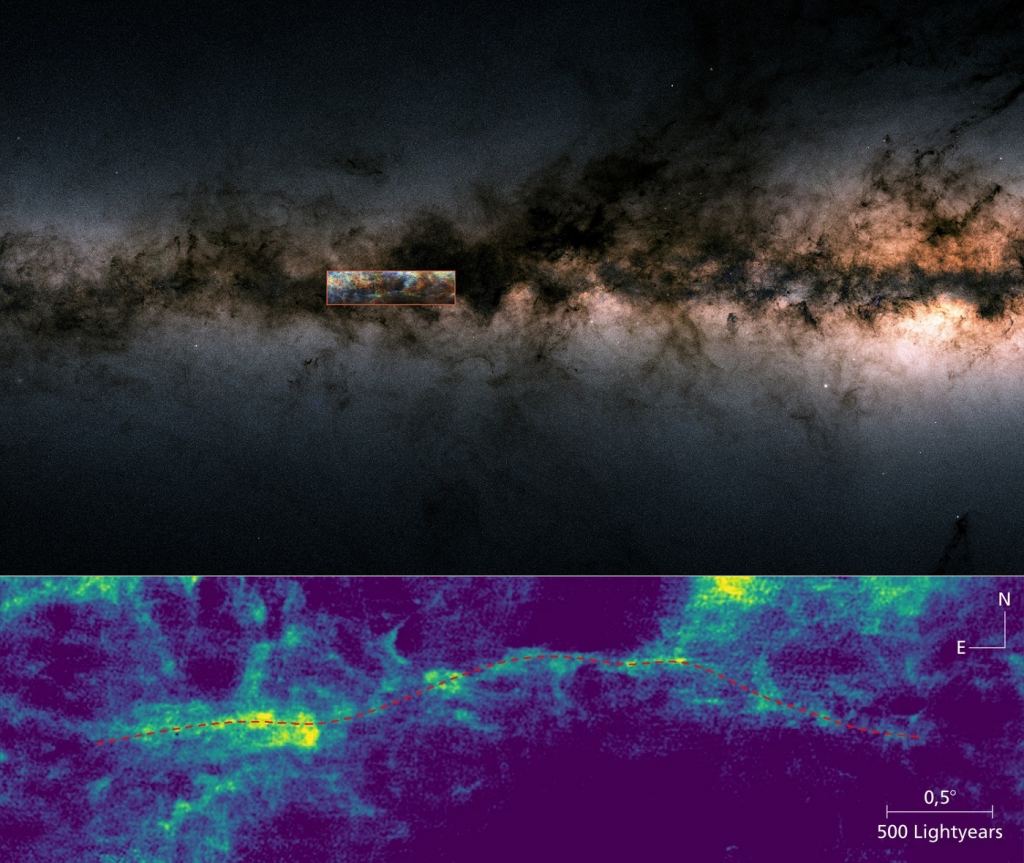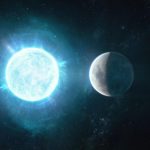Key Takeaways:
- Scientists have discovered a massive filament of atomic hydrogen gas in our galaxy called “Maggie”.
- Maggie is one of the longest structures ever seen in our galaxy, located approximately 55,000 light-years away.
- The discovery of Maggie is significant because it could help us understand how atomic hydrogen turns into molecular hydrogen, which is essential for star formation.
- Maggie is 3,900 light-years long and 130 light-years wide, which is much larger than the largest known clouds of molecular gas.
- Scientists believe that Maggie could eventually condense into molecular clouds and form new stars.
Our Universe was created in an enormous explosion some 13.8 billion years ago, giving rise to the first subatomic particles and the principles of modern physics. About 370,000 years later, hydrogen had formed, the building block of stars, which fuse hydrogen and helium in their interiors to create all the heavier elements. Even though hydrogen is still the most common element in the universe, it can be challenging to find individual hydrogen gas clouds in the interstellar medium (ISM).
Because of this, it is challenging to study the early stages of star formation, which could provide information about how galaxies and the universe have developed. Recent observations of a massive filament of atomic hydrogen gas in our galaxy were made by an international team under the direction of astronomers from the Max Planck Institute of Astronomy (MPIA). One of the longest structures ever seen in our galaxy, “Maggie,” is situated approximately 55,000 light-years away (on the other side of the Milky Way).
MPIA Ph.D. student Jonas Syed led the study that describes their findings and was recently published in the journal Astronomy & Astrophysics. He was joined by researchers from the University of Vienna, the Harvard-Smithsonian Center for Astrophysics (CfA), the Max Planck Institute for Radio Astronomy (MPIFR), the University of Calgary, the Universität Heidelberg, the Centre for Astrophysics and Planetary Science, the Argelander-Institute for Astronomy, the Indian Institute of Science, and NASA’s Jet Propulsion Laboratory (JPL).
The HI/OH/Recombination line survey of the Milky Way (THOR), an observation program that uses the Karl G. Jansky Very Large Array (VLA) in New Mexico, provided the data used in this study. This project investigates the formation of molecular clouds, the transformation of atomic hydrogen into molecular hydrogen, the magnetic field of the galaxy, and other issues related to the ISM and star formation using the centimeter-wave radio dishes of the VLA.
The ultimate purpose is to determine how the two most-common hydrogen isotopes converge to create dense clouds that rise to new stars. The isotopes include molecular hydrogen (H2), which is made up of two hydrogen atoms attached together by a covalent bond, and atomic hydrogen (H), which is made up of one proton, one electron, and no neutrons. Only the latter eventually forms relatively compact clouds with icy regions where new stars will eventually form.
This incredibly long filament is an especially exciting discovery because the mechanism by which atomic hydrogen turns into molecular hydrogen is still mainly unknown. Maggie is 3,900 light-years long and 130 light-years wide, while the largest known clouds of molecular gas are typically about 800 light-years long. In a recent MPIA press release, Syed stated:
“The location of this filament has contributed to this success. We don’t yet know exactly how it got there. But the filament extends about 1600 light-years below the Milky Way plane. The observations also allowed us to determine the velocity of the hydrogen gas. This allowed us to show that the velocities along the filament barely differ.”

The team’s analysis, which mostly involved measuring the matter’s velocity against the Milky Way disk’s rotation, revealed that the filament’s mean velocity was 54 km/s-1. This meant that the structure was visible against the cosmic background due to radiation at a wavelength of 21 cm, also known as the “hydrogen line.” “The observations also allowed us to determine the velocity of the hydrogen gas,” said Henrik Beuther, the head of THOR and a co-author on the study. This made it possible for us to demonstrate how little the velocities along the filament differ.
The researchers concluded that Maggie is a cohesive structure based on this information. These results validated observations made by co-author of the paper and University of Vienna astrophysicist Juan D. Soler a year prior. When he observed the filament, he named it after the longest river in his native Colombia: the Río Magdalena (Anglicized: Margaret, or “Maggie”). While Maggie was recognizable in Soler’s earlier evaluation of the THOR data, only the current study proves beyond a doubt that it is a coherent structure.
The scientists also calculated that Maggie contains 8% molecular hydrogen by a mass fraction based on data that has already been published. After examining the gas in more detail, the team concluded that the hydrogen gas builds up into massive clouds at the points along the filament where it converges. They also hypothesize that in those conditions, atomic gas will eventually condense into a molecular form.
“However, many questions remain unanswered,” Syed added. “Additional data, which we hope will give us more clues about the fraction of molecular gas, are already waiting to be analyzed.” Fortunately, several space-based and ground-based observatories will become operational soon, telescopes that will be equipped to study these filaments in the future. These include radio surveys such as the Square Kilometer Array (SKA) and the James Webb Space Telescope (JWST), which will enable us to view the very early phase of the Universe (“Cosmic Dawn”) and the first stars in our Universe.


